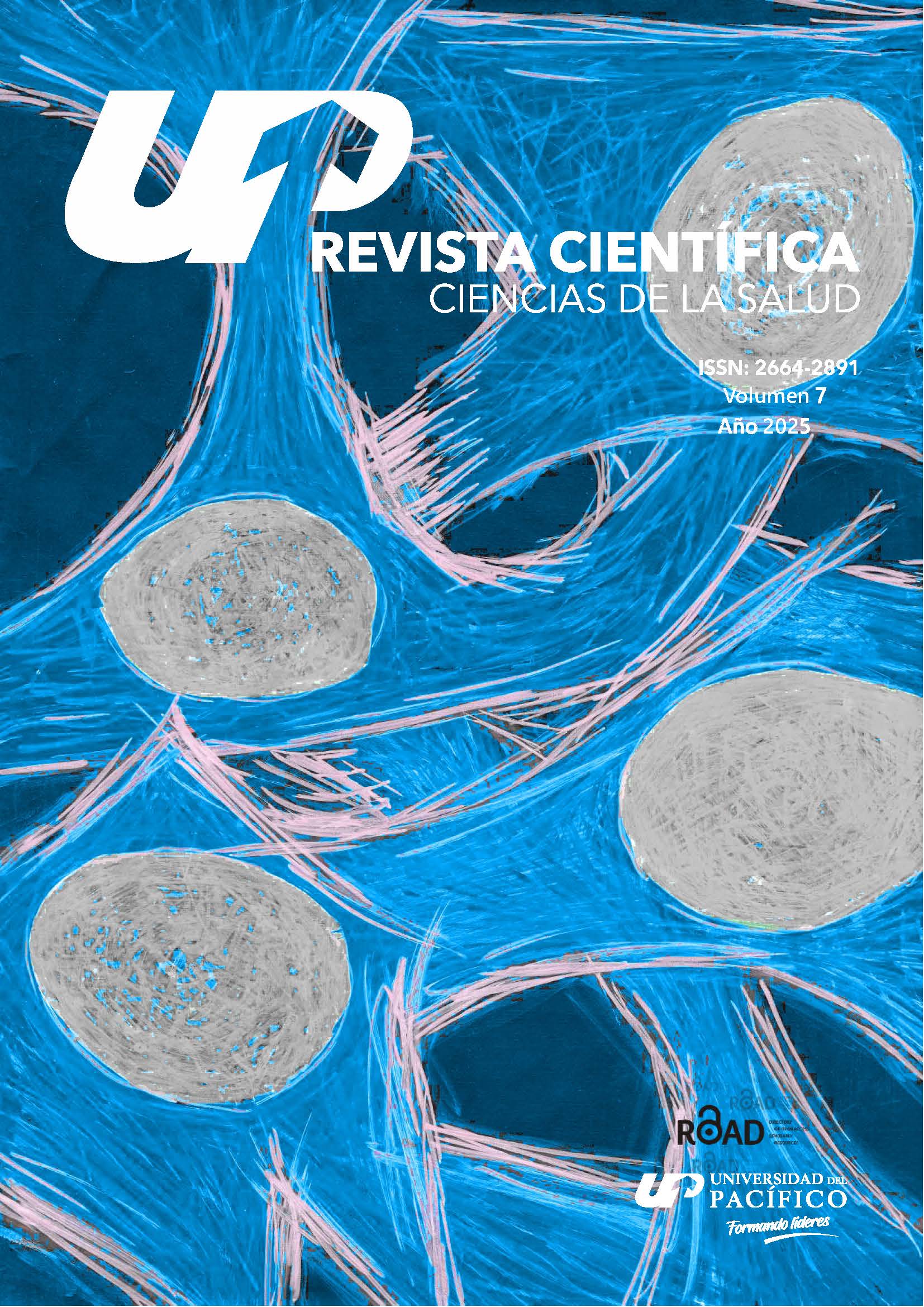Method to evaluate the in vitro efficacy of formulations against Herpes simplex type I
DOI:
https://doi.org/10.53732/rccsalud/2025.e7116Keywords:
herpes simplex 1, antivirals, preclinical evaluation of drugs, acyclovirAbstract
Introduction. Herpes Simplex Virus type I (HSV-1) has a high prevalence, incidence, and morbidity worldwide. The usual treatment employs nucleoside analogues; however, its prolonged use has led to viral resistance, prompting the search for new therapeutic alternatives. In this context, in vitro preclinical assays in the formulation processes offer advantages such as variable control, standardization, and simplicity compared to in vivo studies, although there is limited evidence regarding their use in the evaluation of topical antiviral formulations. Objective. To evaluate a method for determining the in vitro safety and efficacy of formulations against HSV-1. Materials and Methods. Creams, gels, and ointments were formulated with 5% acyclovir as the reference active ingredient. Cytotoxicity was assessed using Resazurin, and antiviral activity was evaluated by quantifying the viral genome through qPCR. Results. The ointment showed a CC50 of 495 µg/mL, IC50 of 3.6 µg/mL, and an SI of 137.5. The gel showed a CC50 of 582.4 µg/mL, an inhibitory concentration 50 ˂1.2 µg/mL, and a selectivity index SI ˃465. Conclusion. The in vitro system based on cytotoxicity and viral quantification by qPCR was effective for evaluating topical formulations. The values obtained were within expected ranges, highlighting the method’s potential as a preliminary tool to optimize and simplify the design of subsequent in vivo studies.
References
Petti S, Lodi G. The controversial natural history of oral herpes simplex virus type 1 infection. Oral Dis. 2019;25(8):1850–65. https://doi.org/10.1111/odi.13234
Mustafa M, Illzam E, Muniandy R, Sharifah A, Nang M, Ramesh B. Herpes simplex virus infections, Pathophysiology and Management. IOSR J Dent Med Sci. 2016;15(07):85–91: https://doi.org/10.9790/0853-150738591
James C, Harfouche M, Welton NJ, Turner KME, Abu-Raddad LJ, Gottlieb SL, et al. Herpes simplex virus: Global infection prevalence and incidence estimates, 2016. Bull World Health Organ. 2020;98(5):315–29. http://dx.doi.org/10.2471/BLT.19.237149
Kłysik K, Pietraszek A, Karewicz A, Nowakowska M. Acyclovir in the treatment of herpes viruses–a review. Curr Med Chem. 2020;27(24):4118–37. http://dx.doi.org/10.2174/0929867325666180309105519
Stahl JP, Mailles A. Herpes simplex virus encephalitis update. Curr Opin Infect Dis. 2019;32(3):239–43. https://doi.org/10.1097/QCO.0000000000000554
Morales-Alvarez MC. Nephrotoxicity of Antimicrobials and Antibiotics. Adv Chronic Kidney Dis. 2020;27(1):31–7. https://doi.org/10.1053/j.ackd.2019.08.001
Richelsen RKB, Jensen SB, Nielsen H. Incidence and predictors of intravenous acyclovir-induced nephrotoxicity. Eur J Clin Microbiol Infect Dis. 2018;37(10):1965–71. https://doi.org/10.1007/s10096-018-3332-5
Burrel S, Topalis D, Boutolleau D. Herpes simplex virus resistance to antivirals. Virologie. 2020;24(5):325–42. https://doi.org/10.1684/vir.2020.0864
Langhans SA. Three-dimensional in vitro cell culture models in drug discovery and drug repositioning. Front Pharmacol. 2018;9(JAN):1–14. https://doi.org/10.3389/fphar.2018.00006
Aslantürk ÖS. In Vitro Cytotoxicity and Cell Viability Assays: Principles, Advantages, and Disadvantages. In: Larramendy ML, Soloneski S, editors. Genotoxicity. Rijeka: IntechOpen; 2017. https://doi.org/10.5772/intechopen.71923
Singh S, Khanna VK, Pant AB. Development of In Vitro Toxicology: A Historic Story. In Vitro Toxicol. 2018;1–19. https://doi.org/10.1016/B978-0-12-804667-8.00001-8
Cantero-González G, Alvarenga N, Florentín-Pavía MM, Gonzalez-Maldonado P, Sotelo PH. Antiviral activity of two Acanthospermum species against herpes simplex virus 1. J Ethnopharmacol. 2023;303(December 2022):115958. https://doi.org/10.1016/J.JEP.2022.115958
Gabaglio S, Alvarenga N, Cantero-González G, Degen R, Ferro EA, Langjahr P, et al. A quantitative PCR assay for antiviral activity screening of medicinal plants against Herpes simplex 1. Nat Prod Res. 2019;35(17):2926-2930. https://doi.org/10.1080/14786419.2019.1675064
Singh S, Dash AK, Agrawal S. Semisolid Dosage Forms. Pharm Basic Princ Appl to Pharm Pract Second Ed. 2024;341–91. https://doi.org/10.1016/B978-0-323-99796-6.00019-9
Roacho-Pérez JA, Ruiz-Hernandez FG, Chapa-Gonzalez C, Martínez-Rodríguez HG, Flores-Urquizo IA, Pedroza-Montoya FE, et al. Magnetite nanoparticles coated with PEG 3350-Tween 80: In vitro characterization using primary cell cultures. Polymers (Basel). 2020;12(2). https://doi.org/10.3390/polym12020300
Müller G, Kramer A. Comparative study of in vitro cytotoxicity of povidone-iodine in solution, in ointment or in a liposomal formulation (Repithel®) and selected antiseptics. Dermatology. 2006;212(SUPPL.1):91–3. https://doi.org/10.1159/000090102
Suhail M, Liu JY, Hung MC, Chiu IH, Minhas MU, Wu PC. Preparation, In Vitro Characterization, and Cytotoxicity Evaluation of Polymeric pH-Responsive Hydrogels for Controlled Drug Release. Pharmaceutics. 2022;14(9). https://doi.org/10.3390/pharmaceutics14091864
Mishra NN, Kesharwani A, Agarwal A, Polachira SK, Nair R, Gupta SK. Herbal gel formulation developed for anti-human immunodeficiency virus (HIV)-1 activity also inhibits in vitro HSV-2 infection. Viruses. 2018;10(11):1–18. https://doi.org/10.3390/v10110580
Salvaggio MR, Gnann JW. Drugs for Herpesvirus Infections. Fourth Edi. nfectious Diseases. Elsevier Ltd; 2017;2:1309-1317.e1. http://dx.doi.org/10.1016/B978-0-7020-6285-8.00153-2
Collins P. The spectrum of antiviral activities of acyclovir in vitro and in vivo. J Antimicrob Chemother. 1983;12(SUPPL. B):19–27. https://doi.org/10.1093/jac/12.suppl_b.19
Lipipun V, Sasivimolphan P, Yoshida Y, Daikoku T, Sritularak B, Ritthidej G, et al. Topical cream-based oxyresveratrol in the treatment of cutaneous HSV-1 infection in mice. Antiviral Res. 2011;91(2):154–60. http://dx.doi.org/10.1016/j.antiviral.2011.05.013
Neyts J, Andrei G, De Clercq E. The novel immunosuppressive agent mycophenolate mofetil markedly potentiates the antiherpesvirus activities of acyclovir, ganciclovir, and penciclovir in vitro and in vivo. Antimicrob Agents Chemother. 1998;42(2):216–22. https://doi.org/10.1128/AAC.42.2.216
Downloads
Published
How to Cite
Issue
Section
License
Copyright (c) 2025 Revista científica ciencias de la salud

This work is licensed under a Creative Commons Attribution 4.0 International License.






















 All the contents of this journal are licensed under a
All the contents of this journal are licensed under a 